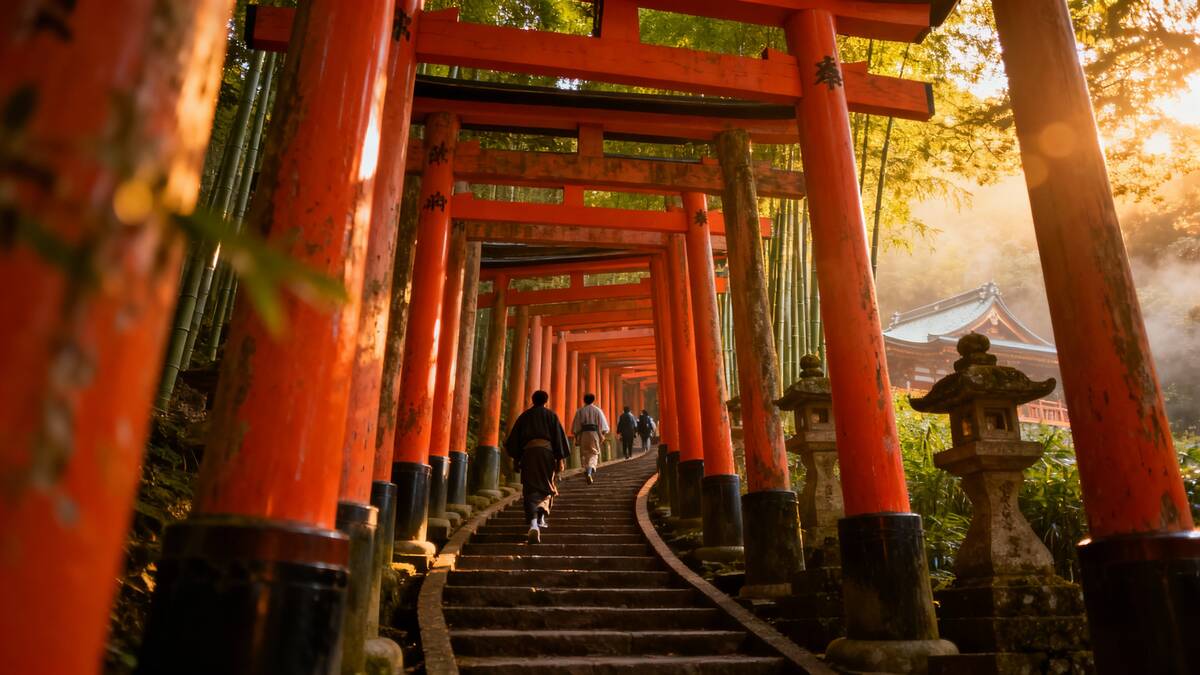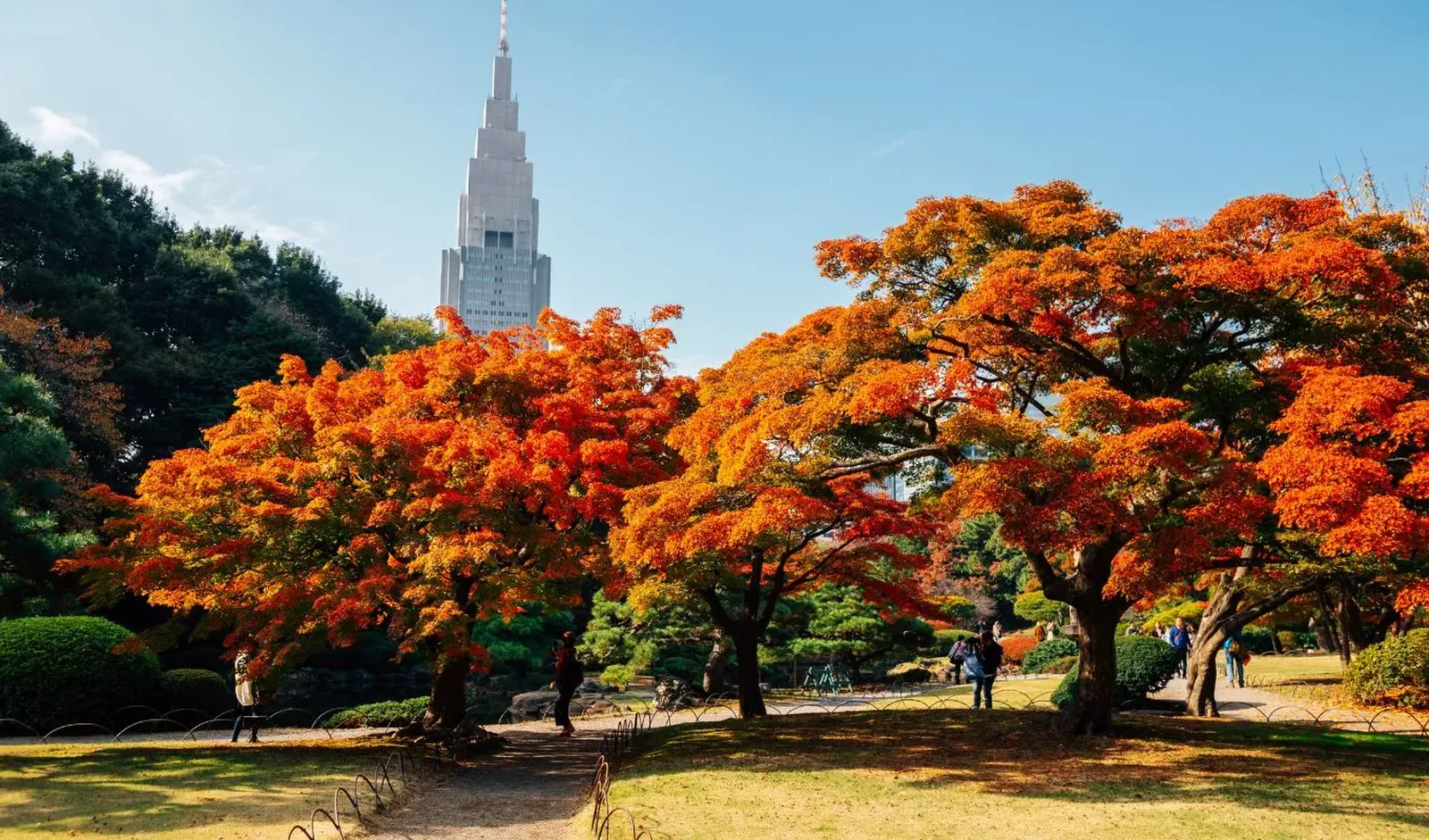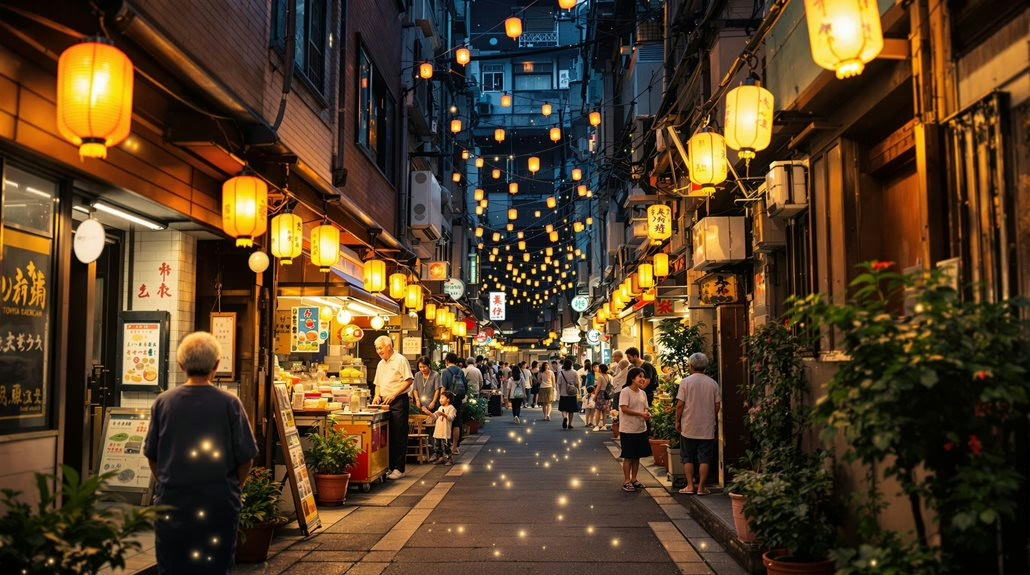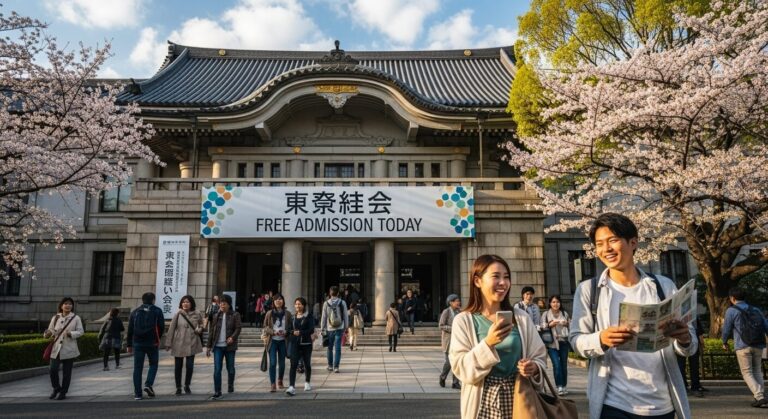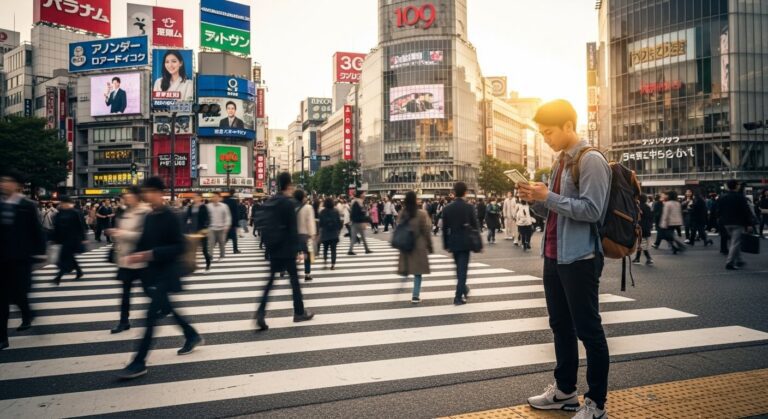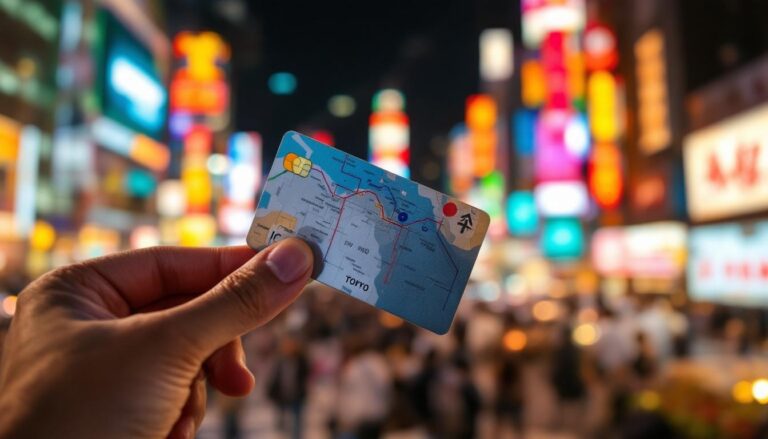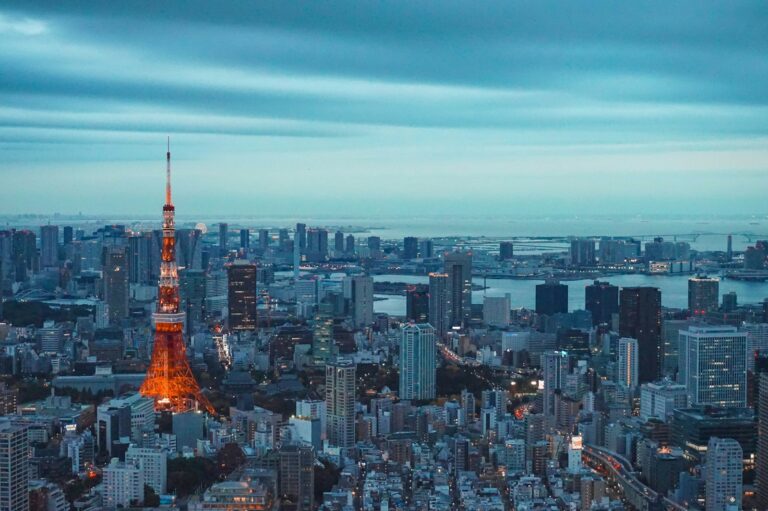19 Best Free Things to Do in Tokyo
Tokyo offers incredible free experiences that rival paid attractions!
Start with Senso-ji Temple’s stunning Kaminarimon Gate and Meiji Shrine’s peaceful forest walks.
Catch the electric energy at Shibuya Crossing between 5-8 PM, then explore Harajuku’s wild street fashion on weekends.
Ueno Park bursts with over 1,000 cherry blossoms in spring, while the Tokyo Metropolitan Government Building provides jaw-dropping 45th-floor city views—Mount Fuji included on clear days!
Browse Tsukiji Outer Market for free food samples and knife-making demos.
Trust me, these budget-friendly adventures barely scratch the surface of what awaits.
Summary & Key Takeaways
Hide- Visit iconic temples and shrines like Senso-ji, Meiji Shrine, and Nezu Shrine to experience traditional architecture, torii gates, and peaceful gardens.
- Explore free parks including Ueno Park for cherry blossoms, outdoor art, and street performances, plus Imperial Palace East Gardens.
- Experience vibrant neighborhoods like Shibuya Crossing, Harajuku's fashion scene, and Tsukiji Outer Market with free food samples and demonstrations.
- Enjoy free observation decks at Tokyo Metropolitan Government Building and cultural museums like Intermediatheque for panoramic city views and exhibits.
- Attend seasonal festivals, witness traditional ceremonies, and enjoy outdoor cultural experiences like street performances and seasonal flower viewing.
Your Gateway to Tokyo’s Most Incredible Free Experiences
Tokyo might seem like an expensive city at first glance, but here’s the secret that savvy travelers know: some of the most memorable experiences won’t cost you a single yen!
With smart planning and insider knowledge, visitors can explore ancient temples, witness breathtaking city views, and immerse themselves in unique cultural moments without touching their wallets.
- Summer Matsuri Guide: Summer Festival Tips in Tokyo
- Tokyo Sakura Forecast: Cherry Blossom Predictions & Updates
- Tokyo Summer Survival Guide: Beating the Heat & Humidity Like a Local
- Tokyo Typhoon Season: Safety Tips & Indoor Backup Plans
- Spring Cherry Blossom Complete Guide: Best Viewing Spots & Timing in Tokyo
- 11 Tokyo Autumn Foliage Spots & Viewing Tips
The key is knowing where to go, when to visit, and how to maximize your time in this incredible metropolis—and trust me, once you access these free adventures, you’ll wonder why anyone would pay for entertainment in Tokyo!
Why Tokyo’s Best Adventures Don’t Require Opening Your Wallet
While most travelers assume world-class experiences come with world-class price tags, Japan’s capital flips that notion completely on its head.
Tokyo rewards curious explorers who venture beyond tourist traps.
Think about it—why pay admission when the city itself is the attraction?
Local food festivals pop up year-round, offering authentic tastes without the restaurant markup.
Underground music venues host incredible performances for free (or just a drink minimum).
The sprawling parks, ancient temples, and lively neighborhoods cost absolutely nothing to explore.
Tokyo’s public spaces are meticulously maintained, turning simple strolls into memorable adventures.
Here’s the beautiful truth: Tokyo’s culture of accessibility means extraordinary experiences are everyone’s birthright, not just big spenders’.
Trust me, your wallet can stay firmly in your pocket while creating unforgettable memories!
Smart Planning Tips for Maximum Free Fun in Japan’s Capital
Timing can transform a good Tokyo trip into an absolutely spectacular one—and it doesn’t cost a single yen extra.
Smart budget travel tips start with visiting major attractions on free admission days—many museums waive fees monthly.
Download offline maps before arriving to avoid expensive data charges while navigating.
Understanding basic cultural etiquette opens doors that money can’t buy: bowing slightly when entering shops, removing shoes when required, and keeping voices down on trains shows respect that locals genuinely appreciate.
Visit neighborhoods early morning for peaceful temple experiences, then hit parks during golden hour for stunning photos.
Trust me, weekdays mean fewer crowds at popular spots!
Pack snacks from convenience stores instead of buying tourist-priced treats.
These simple strategies maximize adventure while keeping wallets happy.
Historic Temples and Shrines That Welcome Everyone
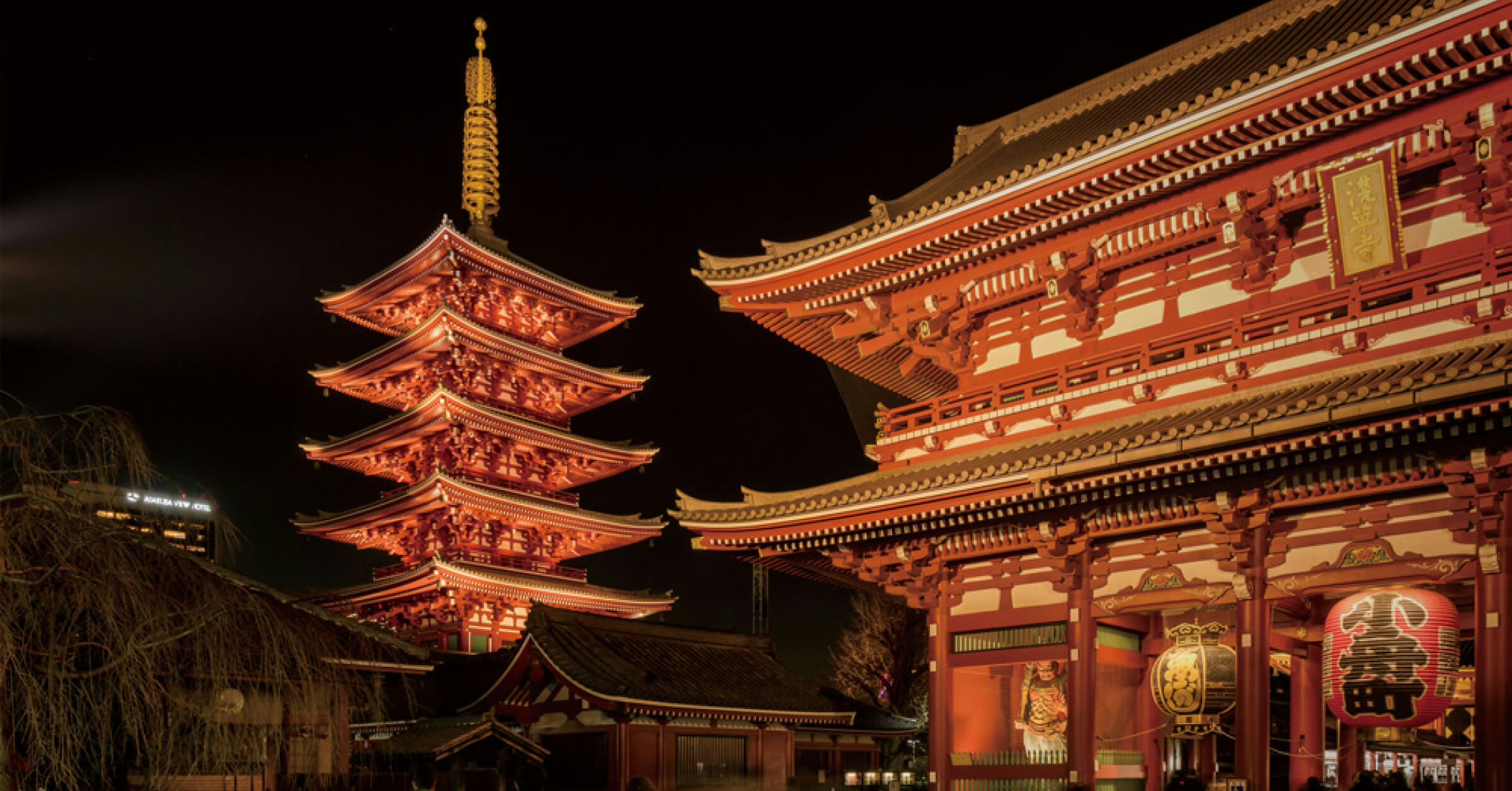
Tokyo’s temples and shrines offer something truly special—they’re absolutely free to visit, and they range from massive tourist magnets to peaceful hidden spots where you might be the only visitor!
Whether you’re drawn to the 1,400-year-old Senso-ji Temple with its giant red lantern and incense smoke, the tranquil forest paths of Meiji Shrine right in the heart of trendy Shibuya, or the breathtaking tunnel of vermillion gates at Nezu Shrine, these sacred spaces welcome everyone regardless of religious background.
Trust me, visiting these spots isn’t just about saving money—it’s about experiencing the spiritual side of Tokyo that somehow exists perfectly alongside all those neon lights and skyscrapers.
Senso-ji Temple: Ancient Wonder in Modern Asakusa
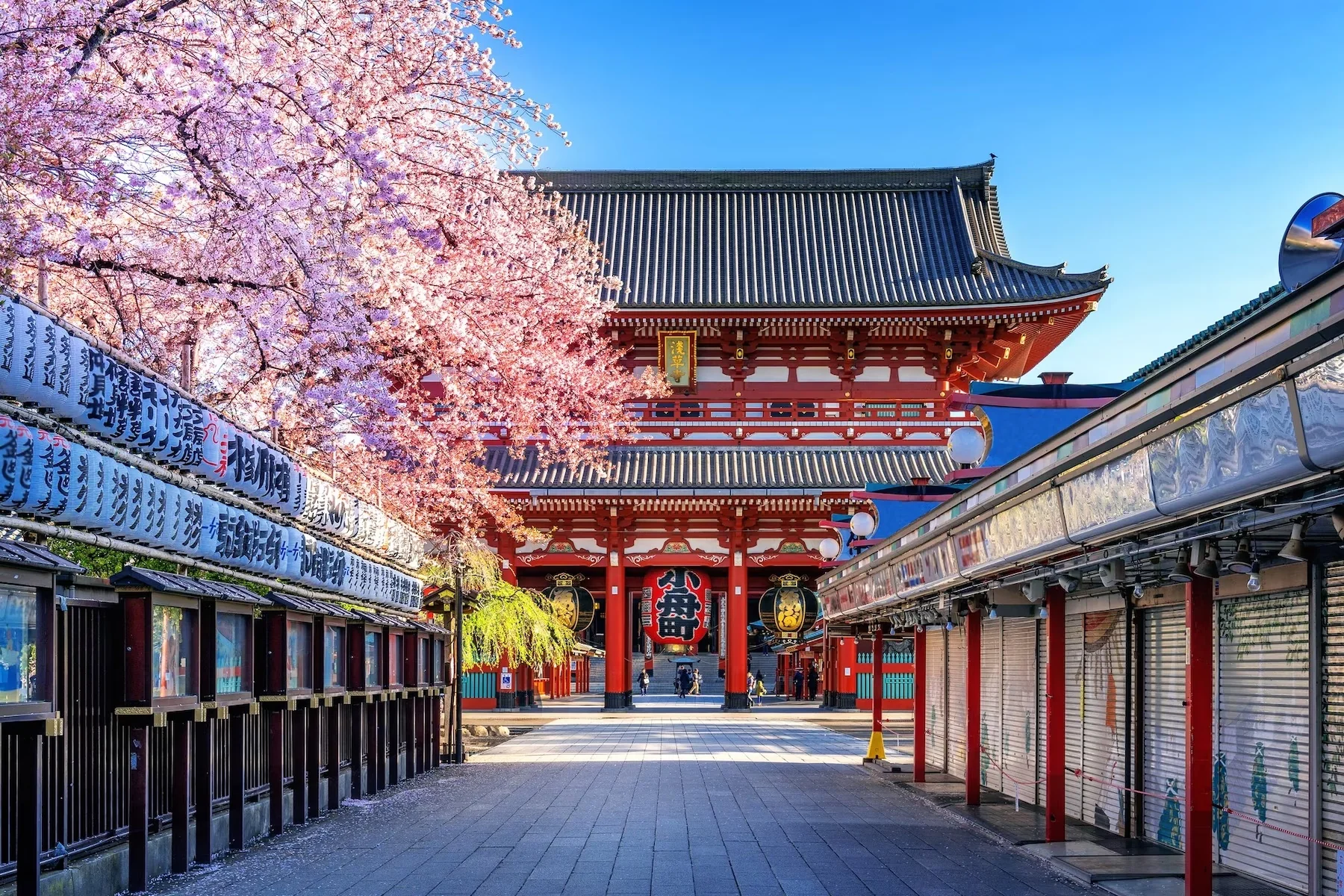
Senso-ji Temple stands as Tokyo’s oldest Buddhist temple, and the best part?
Everything you’ll want to see here is completely free!
Walking through the massive Kaminarimon (Thunder Gate) with its giant red lantern sets the tone for an incredible journey down Nakamise shopping street to the main hall.
At the main hall, you can watch locals and visitors alike participate in traditional purification rituals with incense smoke.
The temple grounds buzz with energy from early morning until evening, offering spectacular photo opportunities of centuries-old architecture against Tokyo’s modern skyline—trust me, you’ll fill up your camera roll in no time.
Exploring the Thunder Gate and Main Halls Without Spending
Walking through the massive Kaminarimon (Thunder Gate) won’t cost you a single yen, yet it’s one of the most photographed spots in all of Japan—and for good reason!
The Thunder Gate folklore tells of protective deities guarding the temple, and you’ll spot their dramatic statues flanking each side.
Trust me, the temple architecture gets even more impressive as you explore the main halls completely free—just wander, photograph, and soak it all in!
Traditional Architecture and Cultural Ceremonies to Witness
Beyond the gate itself, visitors will discover something truly special—living traditions that have survived for centuries right before their eyes.
Watch monks perform daily rituals and worshippers offer prayers at ornate incense burners.
Tea ceremonies happen regularly at nearby cultural centers (completely free to observe!).
Kimono rentals aren’t free, but seeing locals strolling in traditional dress?
Priceless.
Trust me, it’s like stepping into feudal Japan!
Meiji Shrine: Sacred Forest Sanctuary in Bustling Shibuya
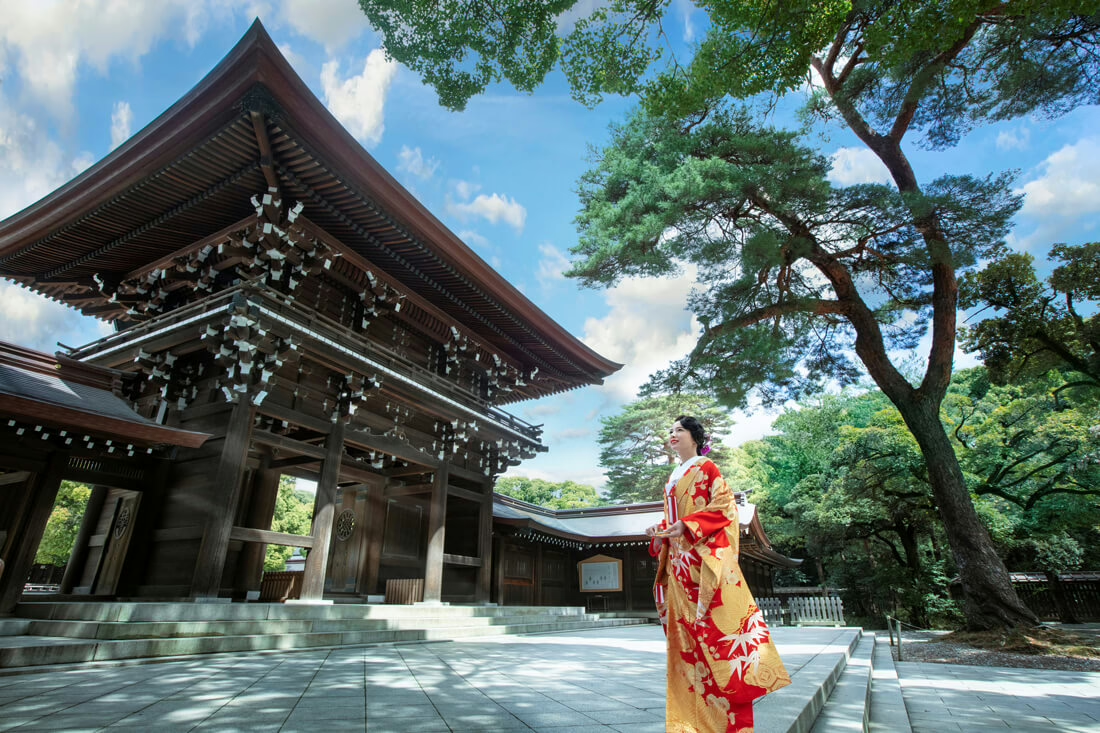
Just a short train ride from the chaos of Shibuya crossing sits Meiji Shrine, where towering trees create the kind of peaceful atmosphere that makes you forget you’re still in one of the world’s busiest cities.
The walk through the forest path to reach the main shrine feels almost magical—and if you time your visit for a weekend, you might stumble upon a traditional Japanese wedding procession, complete with the bride in a stunning white kimono!
The shrine also hosts seasonal festivals throughout the year, from New Year’s celebrations that draw millions of visitors to quieter autumn ceremonies that showcase ancient Shinto traditions.
Walking Through Tokyo’s Most Peaceful Oasis
Tucked away in the heart of fashion-forward Shibuya—yes, that Shibuya with the world-famous scramble crossing—Meiji Shrine offers something almost magical: complete silence in one of Tokyo’s busiest neighborhoods.
The towering trees create instant calm the moment you pass through the massive wooden torii gate.
Trust me, these quiet strolls through meditative gardens feel like stepping into another dimension entirely!
Weekend Wedding Ceremonies and Seasonal Festivals
If you visit Meiji Shrine on a weekend, there’s a good chance you’ll stumble upon a traditional Shinto wedding ceremony in progress—and yes, you’re allowed to watch!
These beautiful wedding traditions unfold right before your eyes, completely free.
Throughout the year, the shrine also showcases stunning seasonal decorations—cherry blossoms in spring, lively foliage in autumn.
Each visit reveals something different, making every trip worthwhile!
Nezu Shrine: Hidden Gem with Stunning Azalea Gardens
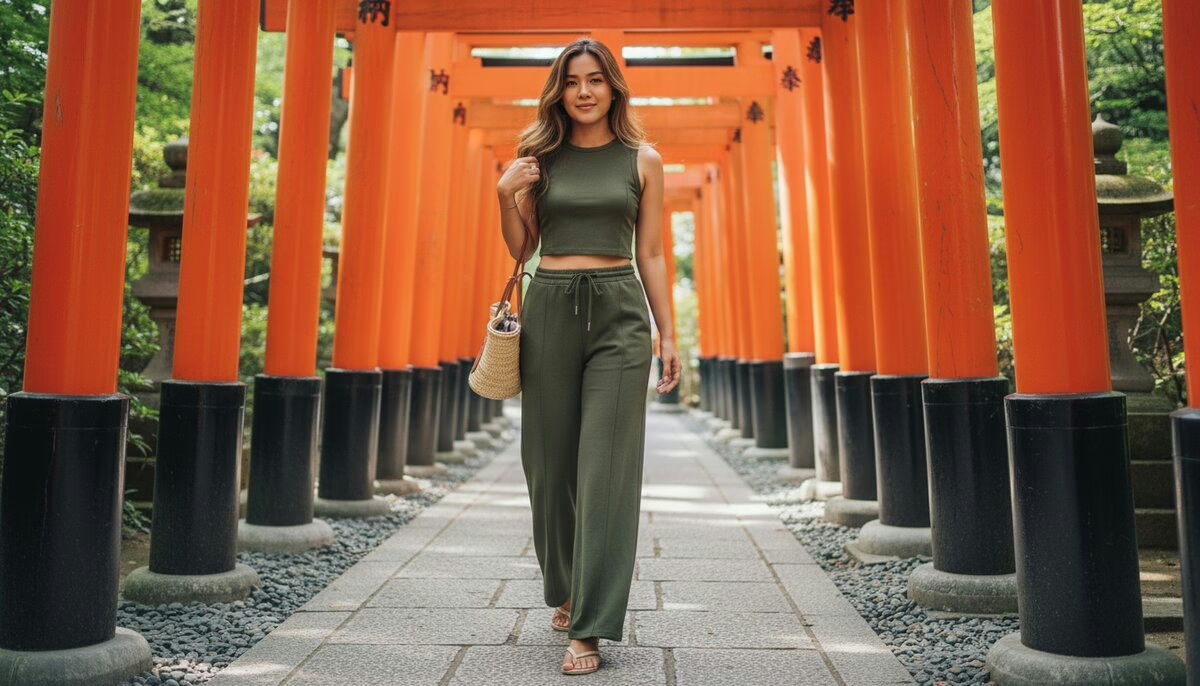
Nezu Shrine’s famous tunnel of vermillion torii gates creates one of Tokyo’s most Instagram-worthy spots—think hundreds of bright orange-red gates forming a winding pathway that looks like something straight out of a movie!
The best time to visit is late April through early May when over 3,000 azalea bushes explode into bloom across the hillside garden, transforming the grounds into a pink and purple wonderland.
For photographers, arrive right at opening (9 AM) to capture the torii tunnel without crowds, or visit during golden hour when the afternoon sun makes those vermillion gates practically glow.
Discovering Traditional Vermillion Torii Tunnels
One of Tokyo’s most photogenic experiences awaits visitors who venture to Nezu Shrine, where hundreds of vermillion torii gates create a mesmerizing tunnel that winds through the shrine grounds.
These lively vermillion gates practically glow in the sunlight—trust me, your camera will thank you!
The path remains accessible year-round, and you might even catch traditional festivals celebrating seasonal changes.
It’s pure Instagram gold without spending a yen!
Best Photography Spots and Seasonal Blooming Times
Beyond the iconic torii tunnels, photographers will find themselves absolutely spoiled by Nezu Shrine’s azalea gardens, which explode into a riot of color each spring during late April and early May.
The seasonal lighting during morning’s golden hour transforms these blooms into pure magic!
Camera tips?
Arrive early to capture those dewdrops and avoid crowds.
Trust me, your Instagram feed will thank you later.
Parks and Gardens for Nature Lovers
Tokyo’s green spaces offer incredible escapes from the urban buzz, and the best part?
Many don’t cost a single yen to enjoy!
From sprawling parks packed with cherry blossoms and world-class museums to meticulously designed gardens that blend centuries-old Japanese traditions with stunning modern cityscapes, you’ll find peaceful retreats around every corner.
Whether you’re craving a picnic spot under sakura trees, a chance to experience three distinct garden styles in one visit, or a traditional landscape where ancient tea houses meet glittering skyscrapers, these natural havens prove that Tokyo’s beauty isn’t all neon and concrete.
Ueno Park: Cultural Hub with Museums and Cherry Blossoms
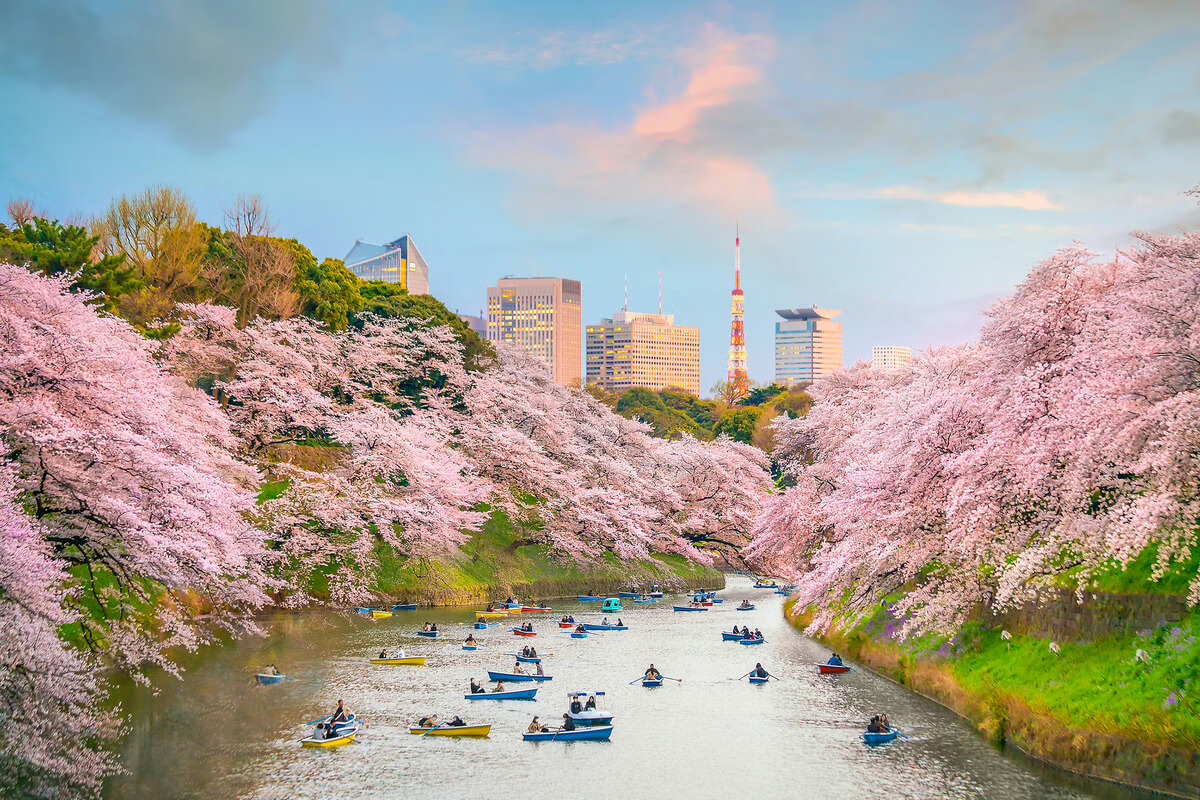
Beyond the museums and temple grounds, Ueno Park transforms into a living gallery throughout the year with free outdoor art installations popping up in unexpected corners.
Talented street performers showcase everything from traditional shamisen music to modern dance routines.
The park absolutely explodes with energy during hanami season (that’s cherry blossom viewing time, folks!) when over a thousand sakura trees turn the landscape pink.
Locals spread out their picnic blankets for all-day celebrations under the blooms.
Trust me, whether you’re catching an impromptu puppet show near Shinobazu Pond or joining the crowds for summer matsuri festivals, there’s always something happening that won’t cost you a single yen!
Free Outdoor Art Installations and Street Performances
Wandering through Ueno Park feels like stepping into an outdoor gallery where art and life collide in the most delightful ways!
Interactive murals pop up throughout Tokyo’s streets, transforming ordinary walls into lively masterpieces you can actually touch and photograph.
Street dance crews regularly perform near Shibuya and Harajuku—trust me, these talented performers will blow your mind!
It’s pure creative energy, completely free.
Seasonal Events and Hanami Celebrations
Spring transforms Ueno Park into what can only be described as nature’s most spectacular free show—hanami season!
Join thousands of locals sprawled beneath pink canopy clouds for hanami picnics celebrating cherry blossoms.
These seasonal celebrations run late March through early April, when over 1,000 sakura trees explode into bloom.
Trust me, it’s absolutely magical—and completely free!
Shinjuku Gyoen: Three Garden Styles in One Location
Important Note: Shinjuku Gyoen actually charges an entrance fee (500 yen for adults), so it cannot be included in an article about “Best Free Things to Do in Tokyo.” This garden requires paid admission and would be misleading to feature in a free activities guide.
Consider replacing this subtopic with genuinely free alternatives like Yoyogi Park, the Imperial Palace East Gardens (free entry), or Sumida Park.
French Formal Gardens and English Landscape Design
Beyond the traditional Japanese landscape, Shinjuku Gyoen showcases two distinct Western garden styles that feel like you’ve stepped into European estates—minus the plane ticket!
The French formal gardens feature perfectly symmetrical layouts with geometric patterns that scream “control and order.”
Meanwhile, the English landscape design takes the opposite approach, creating natural-looking meadows and rolling lawns that feel wonderfully wild and free-spirited!
Japanese Traditional Garden Elements and Tea House Views
Completing the trio of garden styles, Shinjuku Gyoen’s Japanese traditional garden delivers exactly what visitors picture when they dream of zen-like tranquility—and it doesn’t disappoint!
The garden elements here are pure poetry: koi ponds, stone lanterns, and carefully pruned pines creating Instagram-worthy scenes.
The tea house views overlooking the serene water will make you want to sit forever.
Trust me, this section alone justifies the visit!
Hamarikyu Gardens: Traditional Landscape with Modern Skyline
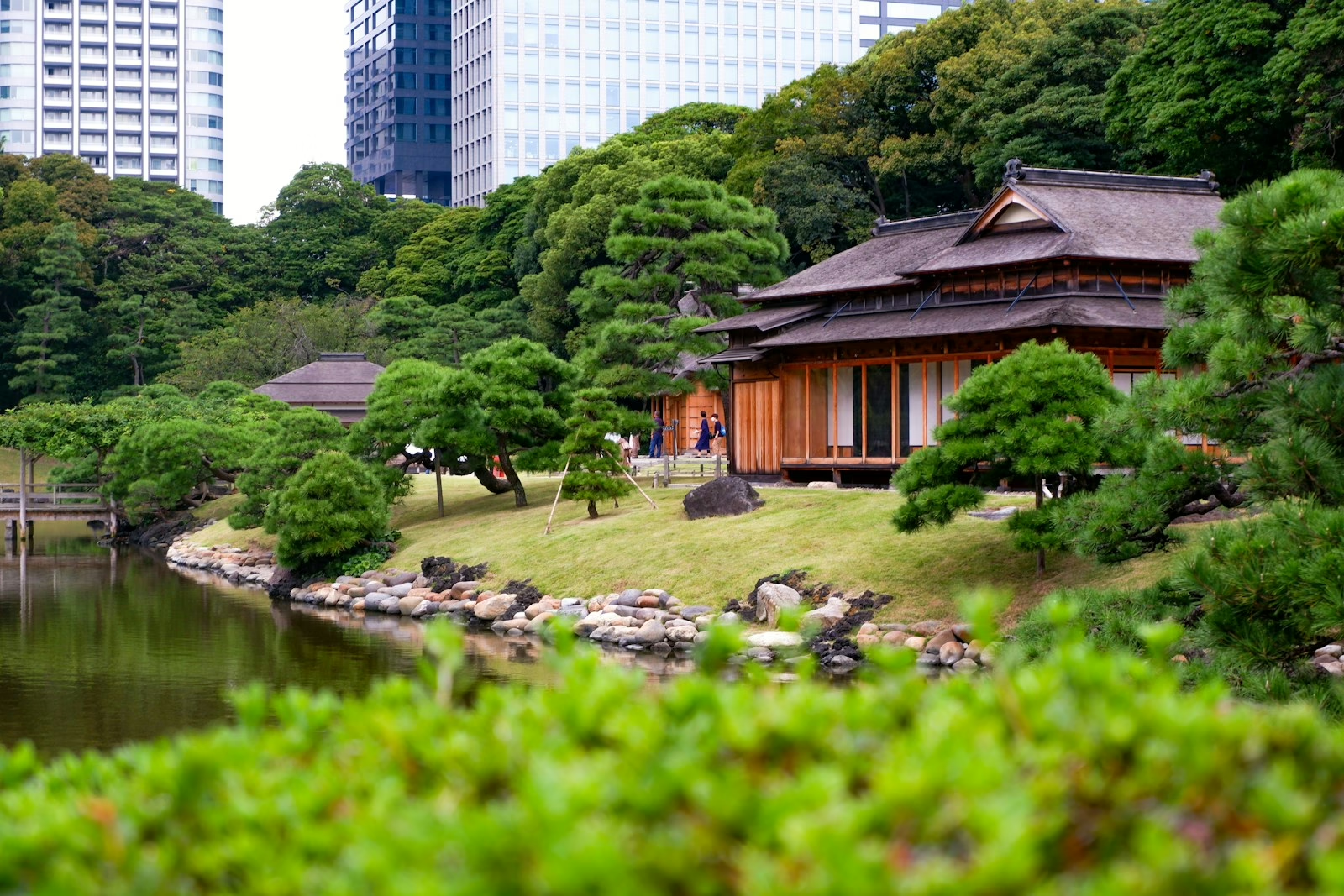
Hamarikyu Gardens brings together an incredible contrast—traditional Japanese landscaping set against Tokyo’s towering skyscrapers, creating photo opportunities that’ll make your friends wonder if you edited the pictures!
The gardens feature authentic tidal ponds that actually fill and drain with Tokyo Bay’s tides (yes, the same system used for centuries), plus historic tea houses where you can experience traditional tea ceremonies.
Throughout the year, you’ll spot seasonal flowers like plum blossoms in spring and cosmos in fall, while bird watchers can catch migrating species using the gardens as a rest stop on their journey.
Tidal Pond Systems and Historic Tea Houses
The tidal pond at Hamarikyu Gardens is a genuine engineering marvel from the Edo period—and yes, it still works exactly as it did 300 years ago!
Seawater flows in and out with Tokyo Bay’s tides, creating a constantly changing ecosystem.
The historic tea house perched beside these tidal ponds offers matcha (green tea) for a small fee, though entry to the gardens themselves is technically paid admission.
Seasonal Flower Displays and Bird Watching Opportunities
Beyond its engineering innovations, nature puts on an incredible show at Hamarikyu throughout the entire year!
Spring brings cherry blossoms and peonies, while autumn delivers lively foliage.
Bird watchers can spot migratory species resting here during seasonal journeys.
The gardens even feature urban beekeeping projects and rooftop gardens, proving Tokyo blends traditional landscapes with modern sustainability.
Trust me, every season offers something spectacular!
Neighborhoods Perfect for Free Walking Adventures
Tokyo’s neighborhoods are like living, breathing museums where you can soak up culture without spending a single yen!
Each district has its own personality—from the organized chaos of Shibuya’s famous scramble crossing to the quirky street fashion scene in Harajuku where teenagers dressed as anime characters casually walk past you.
Trust me, wandering through the Tsukiji Outer Market will have your mouth watering as vendors hawk fresh seafood and street snacks, all while you enjoy the authentic energy of Tokyo’s food culture completely free.
Shibuya Crossing: World’s Busiest Intersection Experience
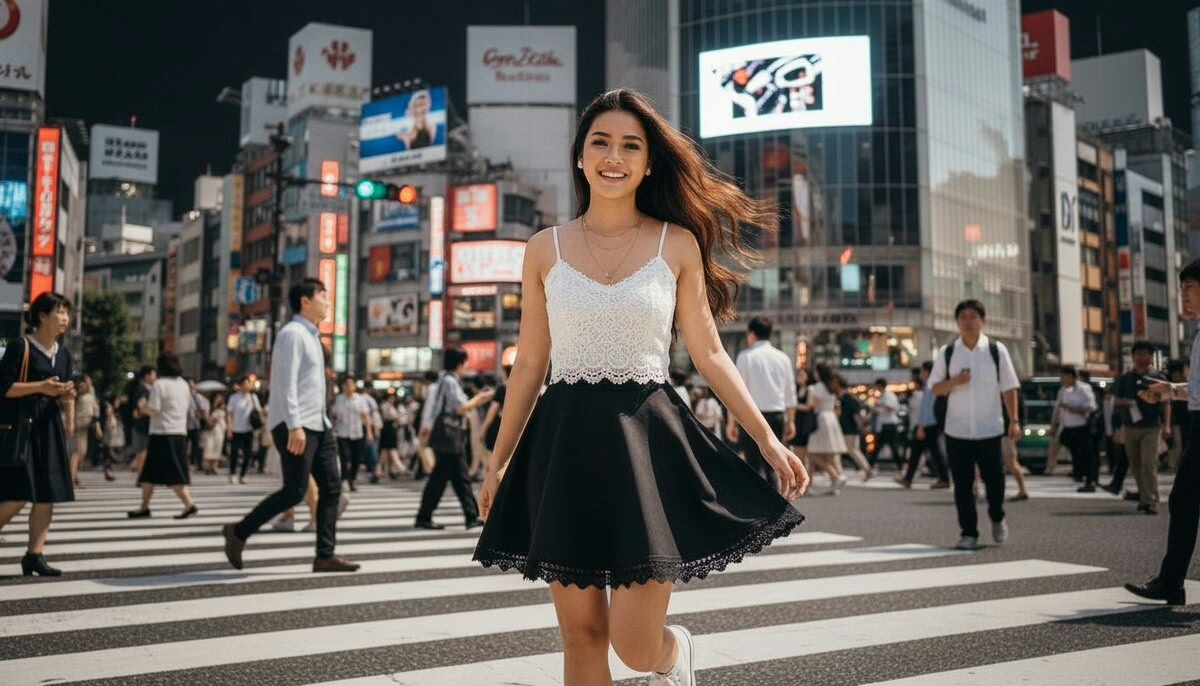
Watching the famous Shibuya scramble crossing in action is like witnessing a perfectly choreographed dance—except with thousands of people somehow never bumping into each other!
For the best view, head to the second-floor Starbucks overlooking the intersection (grab a seat by the window if you’re lucky) or check out the free observation deck at Shibuya Sky‘s lower level.
Time your visit for evening rush hour around 6-8 PM when up to 3,000 people cross at once.
While you’re there, keep your eyes peeled for Tokyo’s cutting-edge street fashion—Shibuya is ground zero for trends that’ll hit the rest of the world in six months, from oversized everything to wild hair colors you didn’t know were possible.
Best Viewing Spots and Peak Crossing Times
If timing your visit right matters anywhere in Tokyo, it’s definitely at Shibuya Crossing—because watching thousands of people flood across the world’s busiest intersection at rush hour hits different than seeing a sparse afternoon crowd.
Hit it between 5-8 PM on weekdays for maximum chaos!
The Starbucks second-floor window offers primo views, though you’ll need caffeine patience.
Evening combines peak crowds with Tokyo nightlife vibes and nearby souvenir shopping.
Street Fashion and Youth Culture Observations
Beyond timing your visit for maximum crowd spectacle, Shibuya Crossing doubles as one of Tokyo’s best free fashion shows—no runway required!
Watch bold vegan fashion statements clash with vintage finds, while skateboard trends roll past in real-time.
The sidewalks buzz with experimental hairstyles, DIY accessories, and fearless style combinations you won’t find anywhere else.
Trust me, people-watching here beats any museum!
Harajuku: Youth Fashion Capital and Creative Expression
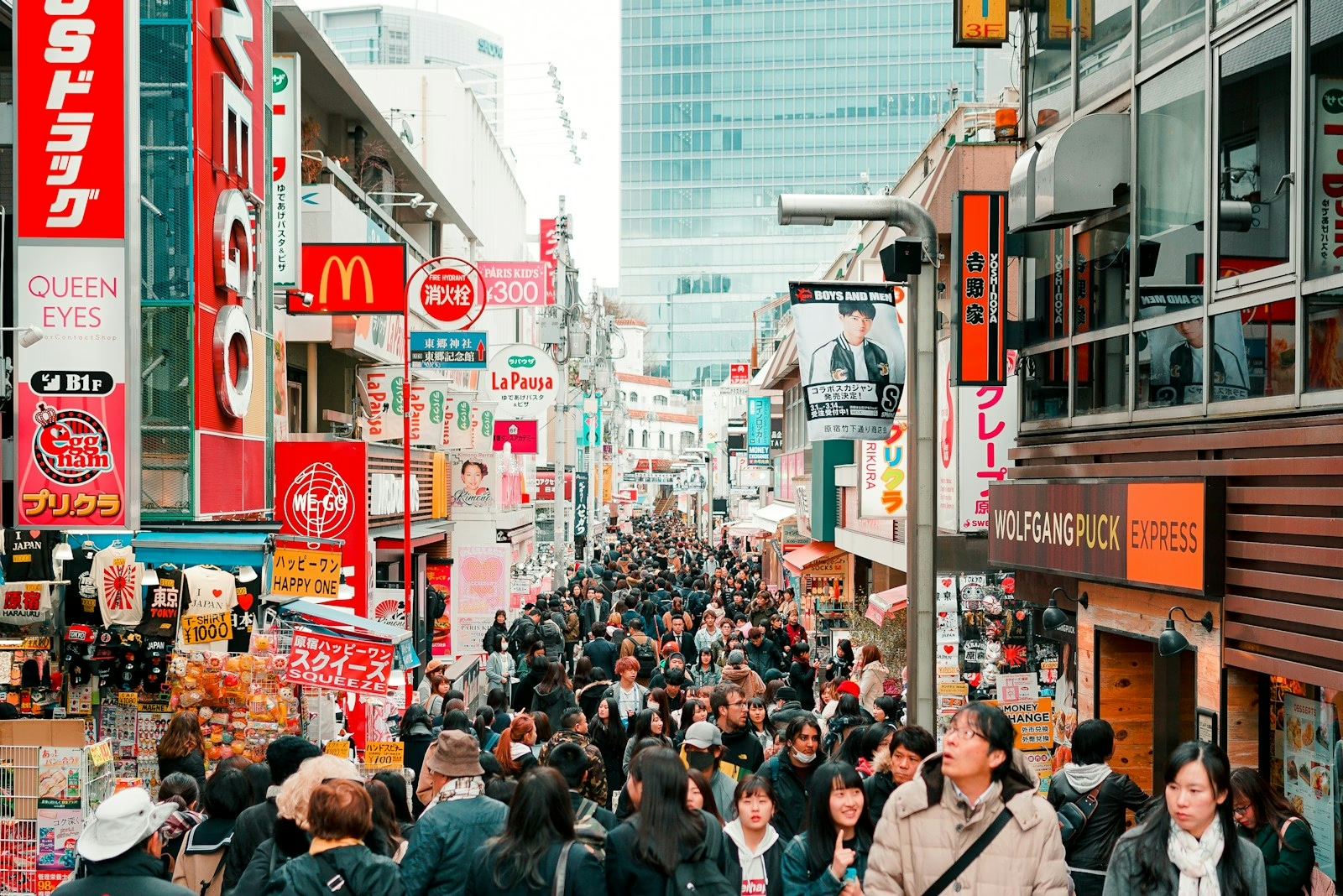
Harajuku transforms into a living fashion show every weekend, especially along Takeshita Street where you can spend hours window shopping at quirky boutiques and watching the parade of creative outfits pass by—no purchase necessary!
The side streets reveal incredible street art murals and spontaneous displays of alternative fashion that range from gothic Lolita to cyberpunk, making it one of Tokyo’s best free galleries of youth culture.
Trust me, even if you’re not into fashion, the sheer creativity and confidence of Harajuku’s crowd will have you pulling out your camera every five minutes.
Takeshita Street Window Shopping and People Watching
Stepping onto Takeshita Street feels like entering a neon-lit portal where Tokyo’s fashion-obsessed teenagers have created their own colorful universe.
This pedestrian paradise costs absolutely nothing to explore!
Watch for these free entertainment staples:
- Wild Harajuku fashion statements that’ll blow your mind
- Cosplay cafes with servers in elaborate costumes
- Street performers and musicians
- Adorable pet fashion trends
Trust me, the people-watching alone justifies the trip!
Street Art and Alternative Fashion Discoveries
While Takeshita Street gets most of the attention, the backstreets and side alleys of Harajuku reveal an entirely different world of creative expression that most tourists completely miss.
Hunt for stunning graffiti murals tucked behind vintage shops and boutiques showcasing underground fashion that defies every trend.
Trust me, wandering freely through these creative corridors beats any guided tour—you’ll discover independent designers and street artists pushing boundaries daily!
Tsukiji Outer Market: Culinary Culture Without the Price Tag
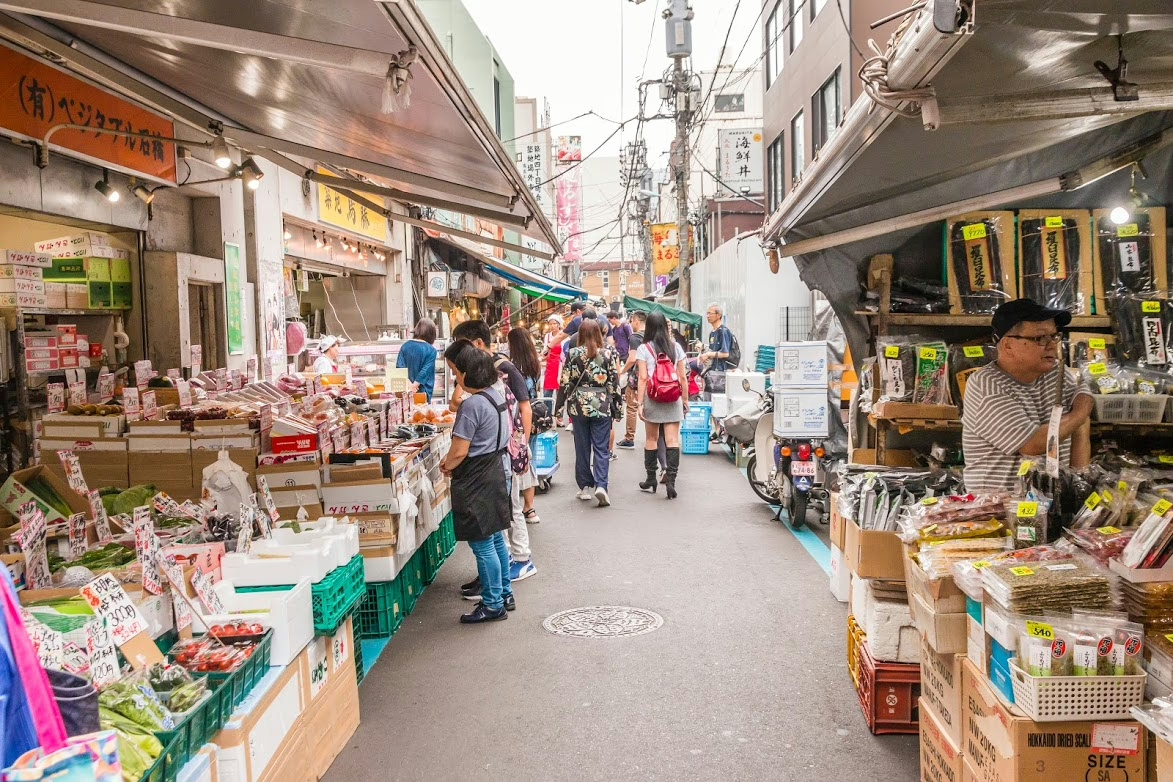
While the famous tuna auctions moved to Toyosu in 2018, the outer market stayed put and remains one of Tokyo’s best free culinary experiences!
Vendors here are incredibly generous with samples—think freshly grilled scallops, tamagoyaki (sweet rolled omelet), and dried fish snacks—plus many shops offer live demonstrations of traditional Japanese knife sharpening and food preparation.
The knife stores alone are worth the visit, where you can watch master craftsmen explain their ancient techniques and marvel at blades that cost more than some people’s rent (don’t worry, just looking is totally free).
Free Samples and Cooking Demonstrations
The vendors at Tsukiji Outer Market have perfected the art of the generous sample, and they’re not shy about sharing their world-class seafood, pickles, and traditional snacks with curious visitors.
Sample tasting here means zero commitment—just pure exploration!
Watch for cooking demos featuring:
- Fresh tamago (egg) preparation
- Grilled seafood techniques
- Traditional knife skills
- Dashi broth-making basics
Trust me, you’ll leave educated and satisfied!
Traditional Tool Shops and Knife Making Displays
Beyond food samples, Tsukiji’s narrow lanes house some of Japan’s most revered kitchen supply specialists, where visitors can witness traditional craftsmanship without spending a yen.
These traditional tool shops welcome browsing, and many offer free knife making demonstrations where master bladesmiths hammer carbon steel into razor-sharp edges.
Trust me, watching a craftsman transform raw metal into culinary art beats any museum exhibit—and your wallet stays happy!
Free Museums and Cultural Centers
Tokyo’s cultural scene doesn’t have to drain your wallet—the city offers some seriously impressive museums and cultural centers that won’t cost you a single yen!
From sweeping observatory views at a government skyscraper to bizarre academic curiosities tucked inside a historic building, these spots prove that “free” definitely doesn’t mean boring.
Trust me, you’ll leave wondering why anyone pays admission fees when experiences like these exist.
Tokyo Metropolitan Government Building: Sky-High City Views
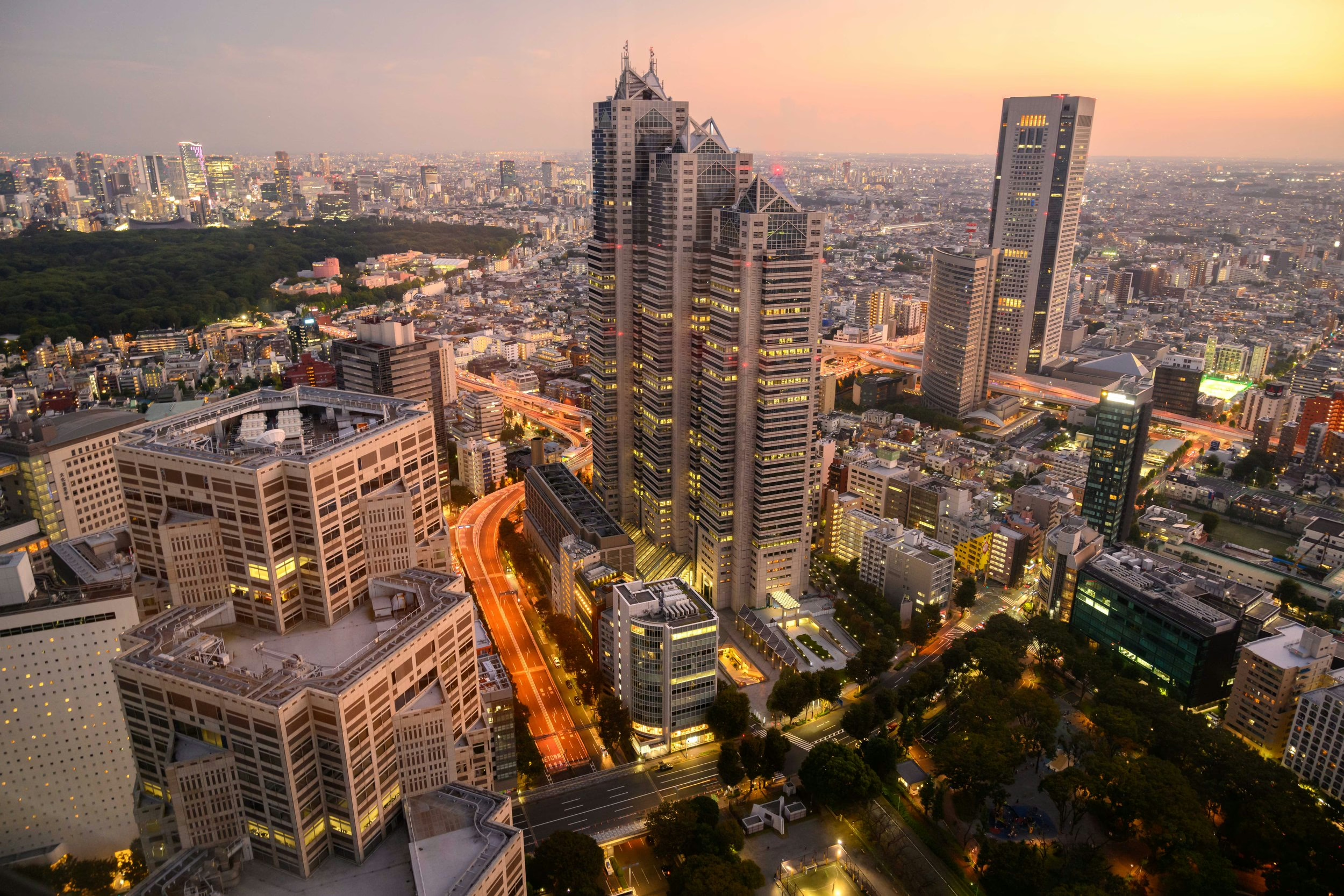
The twin observation decks on the 45th floor of the Tokyo Metropolitan Government Building offer stunning 360-degree views of the city—and they’re completely free, which honestly feels like winning the lottery in expensive Tokyo!
On clear days, visitors can spot Mount Fuji’s iconic peak hovering on the horizon (arrive in the early morning or late afternoon for the best visibility).
Sunset timing transforms the urban sprawl into a glittering sea of lights.
Photographers should claim a window spot early, as the deck gets crowded during golden hour when the city transitions from daytime haze to its neon-lit nighttime persona.
Twin Tower Observation Decks and Photography Tips
Soaring 202 meters above Shinjuku’s bustling streets, both observation decks in the Tokyo Metropolitan Government Building offer panoramic views that rival those from paid attractions—except here, admission costs absolutely nothing.
Observation tips for capturing Tokyo’s skyline:
- Visit at sunset for dramatic lighting shifts
- Bring a wide-angle lens for sweeping cityscapes
- Use window reflections creatively in your photo angles
- Arrive early on clear days for Mount Fuji visibility
Clear Day Mount Fuji Sightings and Sunset Timing
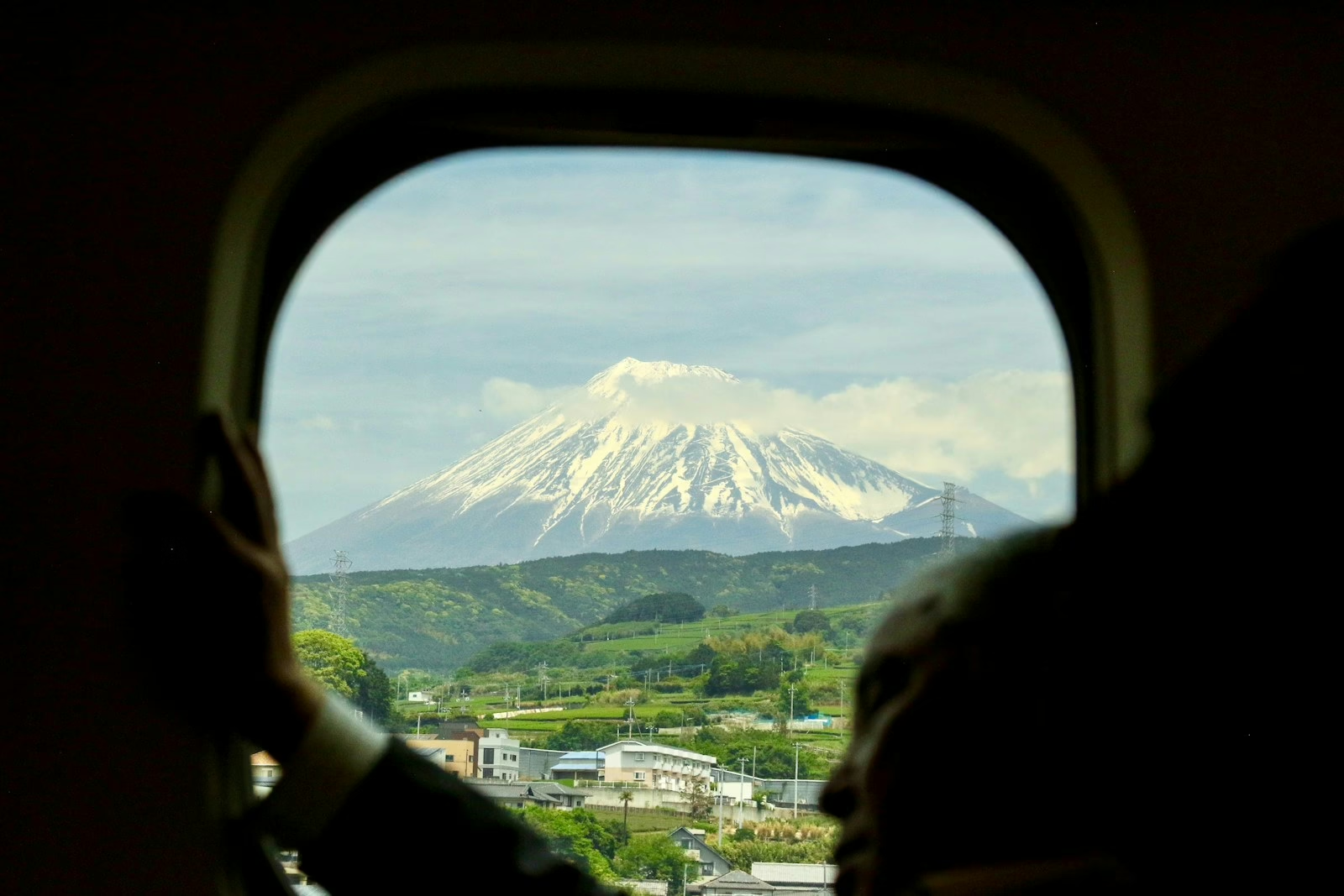
Timing your visit correctly can mean the difference between a nice city view and a jaw-dropping postcard moment featuring Japan’s iconic mountain.
Mount Fuji visibility peaks during winter months, especially early mornings before haze builds up.
Trust me, sunset viewing tips are simple: arrive 45 minutes early, stake out the west-facing windows, and watch the sky explode with color behind Fuji’s silhouette!
Bank of Japan Currency Museum: Money Through the Ages
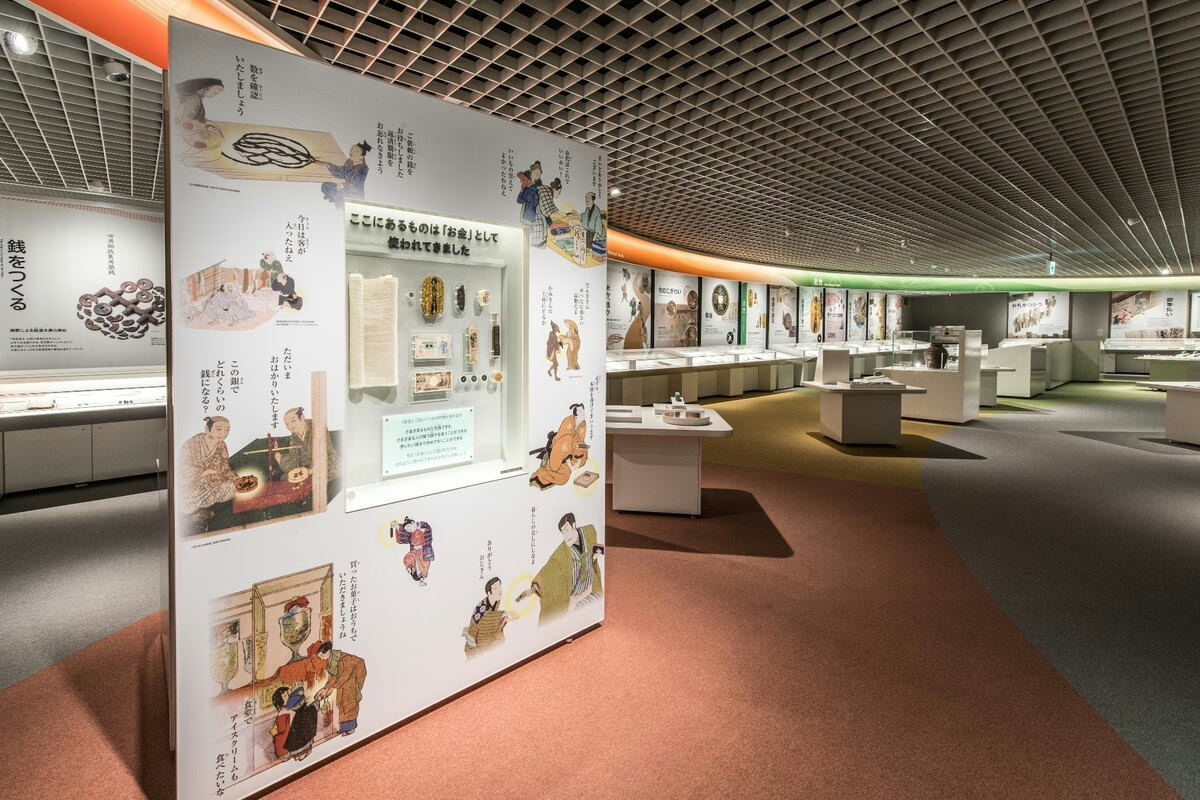
The Bank of Japan Currency Museum offers a fascinating journey through Japan’s monetary history, featuring everything from ancient coins to modern banknotes—and yes, admission is completely free!
The museum’s interactive exhibits let visitors touch real currency samples and see how money-making technology has evolved over centuries, which is way more interesting than it sounds, trust me.
Beyond the cool displays of old cash, you’ll gain genuine insights into how Japan’s economic policies shaped the nation, making this spot perfect for history buffs and anyone curious about what makes the yen so special.
Historical Currency Displays and Interactive Exhibits
Money tells stories, and at Japan’s Bank of Japan Currency Museum, visitors can explore centuries of economic history without spending a single yen!
The exhibits break free from boring displays with engaging features:
- Ancient coin displays showcasing samurai-era currency
- Interactive currency exhibits where you can handle replica money
- Counterfeit detection demonstrations
- Electronic payment evolution timelines
Trust me, it’s surprisingly fascinating!
Understanding Japanese Economic History
How did Japan transform from a feudal society using heavy metal coins to one of the world’s most technologically advanced economies?
The museum answers this fascinating question through detailed exhibits on Japanese trade routes and economic development.
You’ll discover how opening borders sparked incredible growth!
Trust me, watching centuries of financial evolution unfold makes economics actually exciting.
It’s like time-traveling through prosperity.
Intermediatheque: Quirky Academic Collections
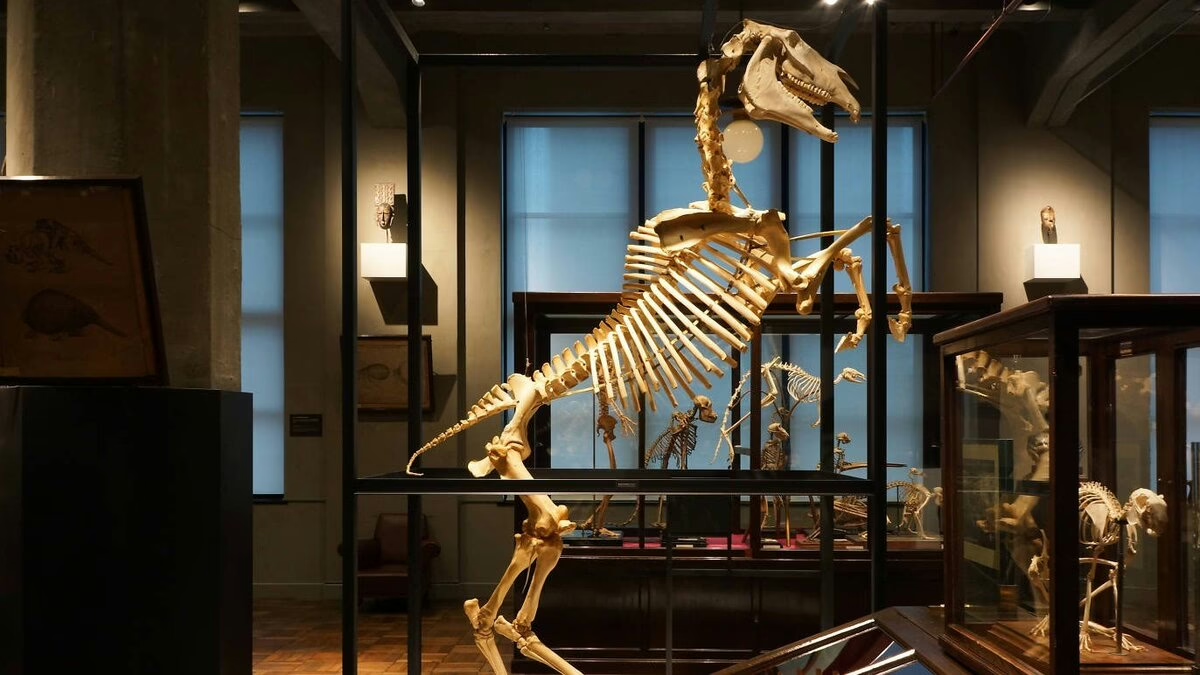
Tucked inside Tokyo’s sleek KITTE shopping complex sits one of the city’s most unusual free attractions—Intermediatheque, where the University of Tokyo displays its fascinating hodgepodge of academic treasures.
We’re talking vintage scientific instruments, taxidermied animals, anatomical models, and artifacts that look straight out of a Victorian scholar’s study!
The museum transforms university research materials into an Instagram-worthy wonderland where dusty academic collections get the spotlight they deserve.
University Research Displays and Scientific Artifacts
The Intermediatheque stands as one of Tokyo’s most unusual free attractions—a collaboration between Japan Post and the University of Tokyo that transforms a chunk of the old postal museum into something that feels like stepping into a Victorian-era cabinet of curiosities.
These university exhibits showcase scientific relics across multiple floors:
- Taxidermied animals from extinct species
- Antique laboratory instruments and measuring devices
- Geological specimens and mineral collections
- Historical academic research equipment
Rotating Exhibitions and Educational Programs
Beyond the permanent collections, Intermediatheque keeps things fresh with regularly changing exhibitions that dig into specific themes from the University of Tokyo’s vast academic archives.
These rotating displays often feature interactive workshops where you can get hands-on with science and history.
Want deeper insights?
Check their schedule for artist led tours that reveal hidden stories behind the quirky objects!
Markets and Shopping Districts for Window Shopping
Tokyo’s markets and shopping districts offer some of the best free entertainment in the city—no purchase required!
Whether you’re soaking up the energetic chaos of Ameya-Yokocho Market or strolling down the charming Nakamise Shopping Street, window shopping here is like walking through living museums where commerce meets culture.
Trust me, these bustling spots are perfect for people-watching, snapping photos, and getting a real feel for Tokyo’s unique blend of old and new without spending a single yen.
Ameya-Yokocho Market: Post-War History Comes Alive
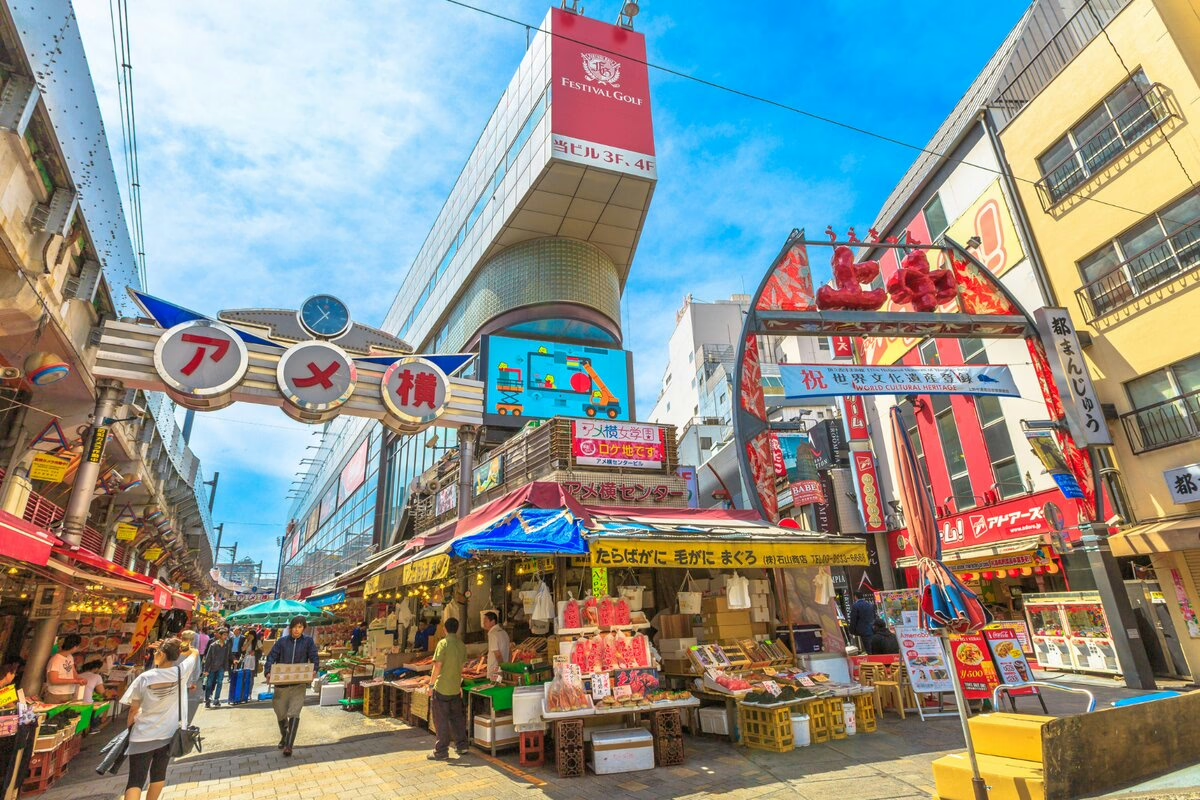
Ameya-Yokocho Market buzzes with the same scrappy energy it had when it started as a black market after World War II, and today you can still find incredible vintage treasures tucked between vendors hawking dried seafood and traditional Japanese sweets like taiyaki (those adorable fish-shaped cakes filled with sweet red bean paste).
The real magic happens when you start chatting with the shopkeepers—many of whom have been there for decades and love sharing stories about their wares!
And here’s a secret: unlike most of Tokyo, this market actually welcomes a bit of friendly bargaining, especially if you’re buying multiple items or visiting near closing time.
Vintage Finds and Traditional Snack Vendors
Stepping into this bustling street market near Ueno Station feels like traveling back to 1940s Japan—except now you can grab a bubble tea alongside dried squid!
Bargain hunters score big here:
- Vintage clothing stalls offering retro kimonos and band tees
- Snack vendors grilling fresh seafood
- Army surplus gear and quirky collectibles
- Sweet potato stands perfect for chilly days
Trust me, wandering beats window shopping anywhere else!
Bargaining Culture and Local Interaction Tips
While exploring those jam-packed stalls might seem intimidating at first, visitors often discover that Ameya-Yokocho’s vendors genuinely enjoy chatting with curious shoppers—even those just browsing!
Understanding basic bargaining etiquette helps—polite negotiation works better than aggressive haggling.
Trust me, learning simple local language tips like “sumimasen” (excuse me) and “kore wa ikura desu ka?” (how much is this?) opens doors to amazing conversations and maybe even discounts!
Nakamise Shopping Street: Traditional Souvenir Paradise
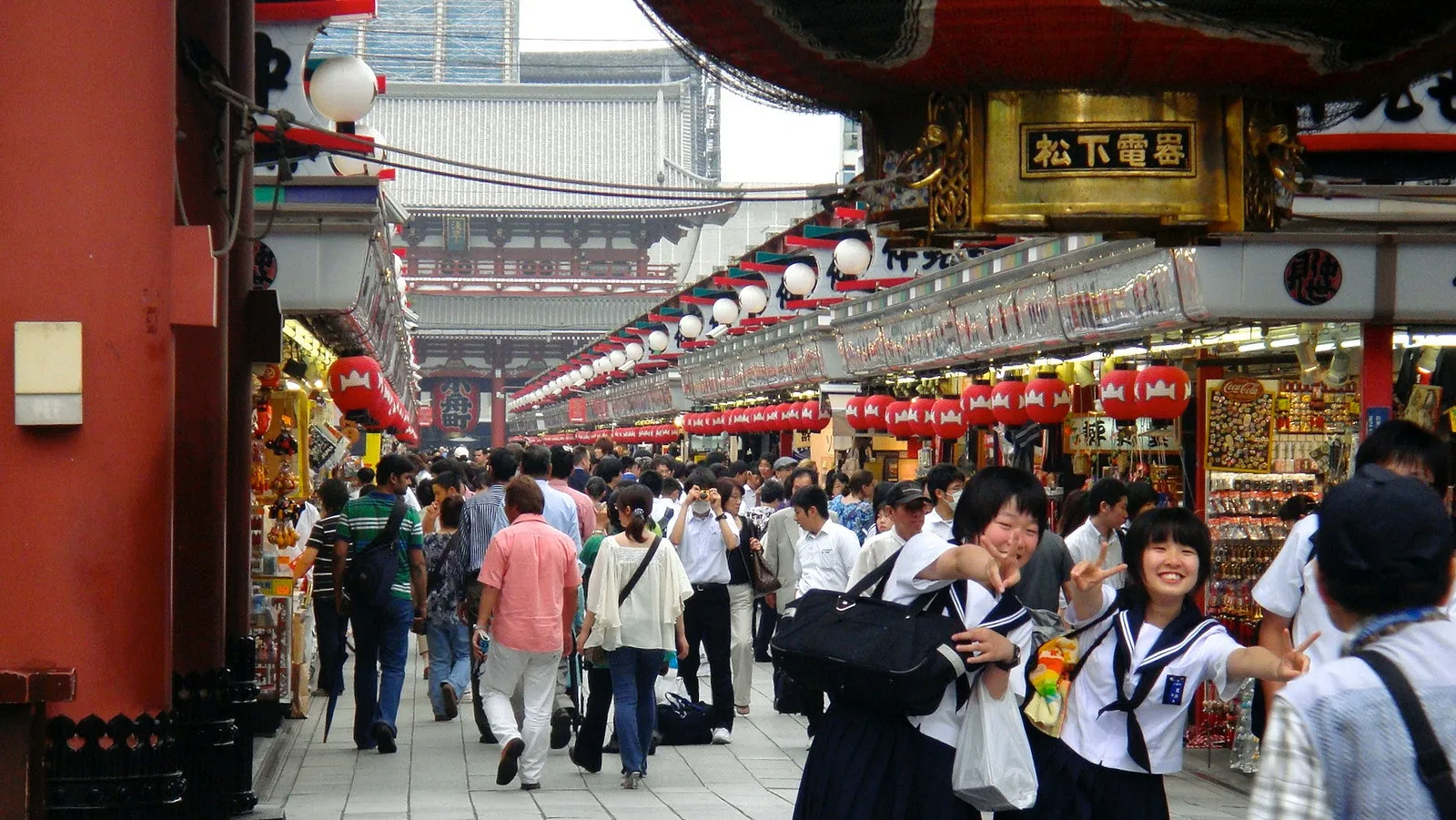
Nakamise Shopping Street stretches for about 250 meters from the Kaminarimon Gate to Sensō-ji Temple, and it’s packed with over 90 small shops selling everything from handcrafted folding fans and traditional wooden combs to colorful yukata robes and hand-painted chopsticks.
The best part?
You can absolutely browse for free, watch artisans demonstrate their crafts right in their storefronts, and even score samples of freshly-made ningyo-yaki (little cakes shaped like dolls) and senbei (crispy rice crackers) while you stroll.
This is where you’ll find the real deal when it comes to Japanese souvenirs, and trust me, even if you’re not buying, the lively displays and skilled craftsmanship are worth the visit alone!
Handcrafted Items and Traditional Japanese Crafts
Leading straight from Senso-ji Temple’s main entrance, this 250-meter pedestrian street packs over 90 shops into a relatively compact space—and it’s absolutely bursting with traditional Japanese crafts that’ll make your eyes light up!
Check out these handcrafted treasures at local artisan markets and traditional craft workshops:
- Hand-painted folding fans
- Wooden kokeshi dolls
- Delicate origami paper sets
- Authentic yukata robes
Window shopping here?
Totally free and incredibly rewarding!
Street Food Samples and Cultural Demonstrations
Beyond the beautiful crafts, one of the absolute best parts about strolling through Nakamise is the incredible array of food samples that vendors happily offer to passersby—completely free!
Try local street snacks like senbei rice crackers and ningyo-yaki cakes without spending a yen.
Many shops also feature cultural craft demonstrations where artisans showcase traditional techniques.
It’s wandering made delicious!
Seasonal Events and Festivals Throughout the Year
Tokyo’s seasonal events transform the city into a constantly changing celebration, and the best part?
Most of these spectacular experiences won’t cost you a single yen!
From the dreamy pink clouds of cherry blossoms in spring to lively summer festivals with their taiko drums and dancing, each season brings its own free entertainment.
Whether you’re catching the autumn leaves painting the parks in fiery reds and golds or joining crowds at neighborhood matsuri, timing your visit around these natural and cultural events means you’ll experience Tokyo at its absolute finest without opening your wallet.
Cherry Blossom Season: Best Free Viewing Locations
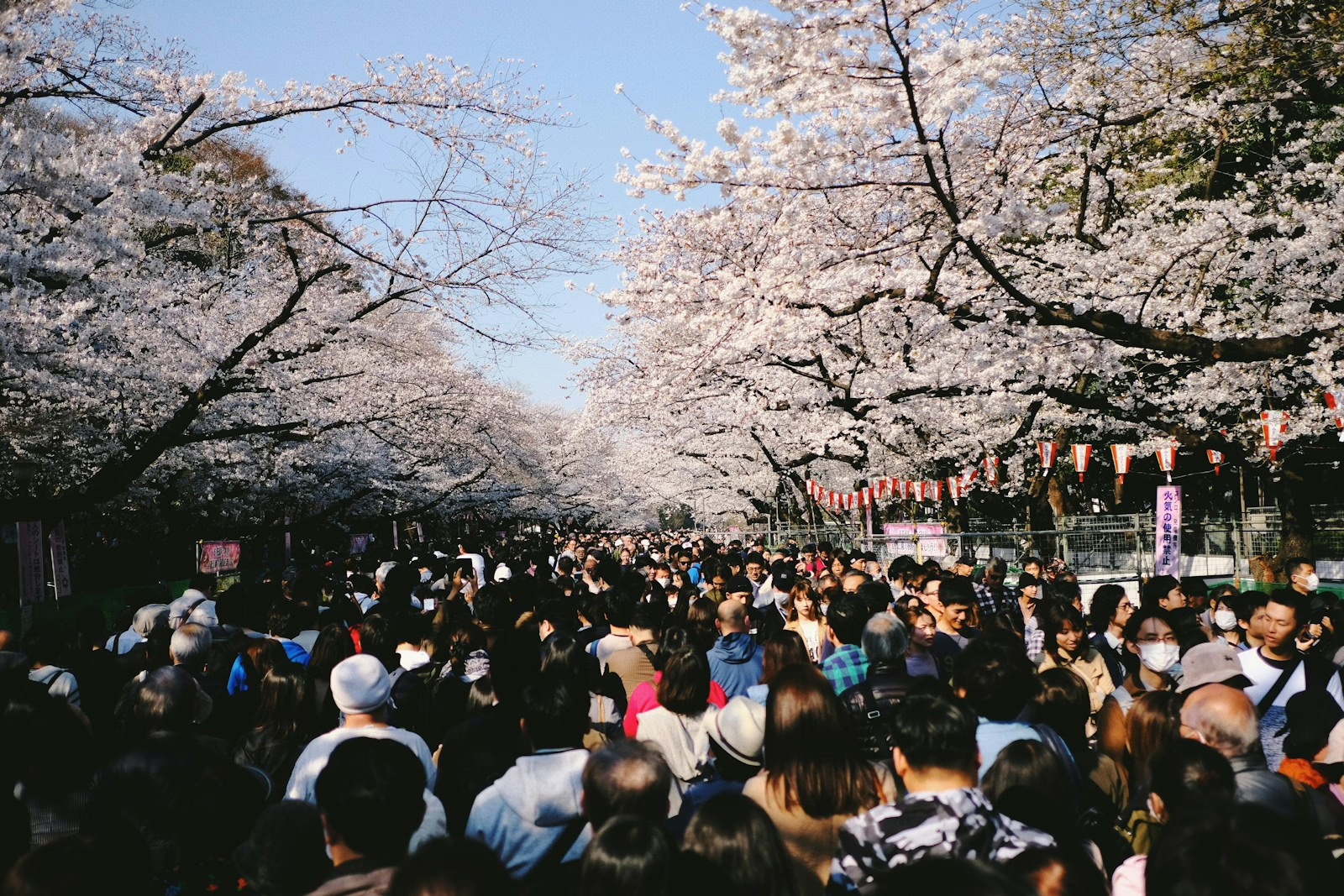
Cherry blossom season transforms Tokyo into a pink wonderland, but here’s the thing—timing is everything when it comes to catching those fleeting blooms at their absolute best!
The sakura typically hit peak bloom for just one magical week (usually late March to early April), so checking the Japan Meteorological Corporation’s bloom forecast before booking your trip can make or break your hanami experience.
Once you’ve scored the perfect timing, you’ll want to know the unwritten rules of hanami parties and which parks offer the most stunning (and crowd-friendly) picnic spots for spreading out your blue tarp and enjoying the show.
Timing Your Visit for Peak Bloom Periods
When planning a cherry blossom viewing trip to Tokyo, timing can make the difference between standing under a canopy of spectacular pink blooms and staring at bare branches (or worse, finding just a carpet of fallen petals on the ground).
Here’s your seasonal bloom tips for peak bloom planning:
- Late March to early April typically hits peak bloom.
- Check Japan Meteorological Corporation forecasts two weeks before.
- Mid-bloom lasts only 4-7 days—book flights accordingly.
- Weekday mornings offer crowd-free viewing at popular spots.
Hanami Party Etiquette and Best Picnic Spots
Joining a hanami party ranks among Japan’s most beloved springtime traditions, but first-timers often feel intimidated by the unwritten rules of flower-viewing gatherings.
Trust me, picnic etiquette here is invigoratingly simple!
Arrive early to claim your spot, remove your shoes on tarps, and don’t touch the flower arrangement displays.
Top free locations include Yoyogi Park and Sumida Park—both welcome spontaneous gatherings without reservations or entry fees!
Summer Festivals: Matsuri Magic Without Entry Fees
Tokyo’s summer matsuri (that’s Japanese for “festival”) transform entire neighborhoods into open-air celebrations where you can experience traditional culture without spending a yen!
These festivals pack in free entertainment that’ll blow your mind—we’re talking taiko drum performances that you can feel in your chest, graceful bon odori dance circles where locals will happily teach you the moves, and processions of portable shrines carried by chanting crowds through lantern-lit streets.
Sure, you might be tempted by the amazing food stalls (and trust me, yakisoba and takoyaki are hard to resist), but simply wandering through the festival atmosphere and soaking up the energy won’t cost you anything.
Traditional Dance Performances and Music Shows
As summer heat blankets Tokyo, the city’s neighborhoods transform into lively stages for traditional dance and music shows that won’t cost visitors a single yen.
Free performances pop up everywhere during festival season:
- Bon Odori folk dances in parks and temple grounds
- Taiko drumming demonstrations that’ll shake your bones
- Kabuki street performances near Asakusa
- Shamisen concerts at cultural centers
Trust me, these authentic experiences beat any ticketed show!
Food Stall Browsing and Cultural Participation
Beyond the performances themselves, Tokyo’s summer festivals deliver an equally compelling draw through their lively food stall districts—and here’s the beautiful part: browsing costs nothing.
Wander freely past sizzling yakitori stands and colorful candy displays!
Many festivals even offer free cultural workshops where visitors learn traditional crafts.
The street food aromas alone make the experience worthwhile, and window-shopping beats paying admission anywhere.
Autumn Leaves: Free Fall Foliage Spectacular
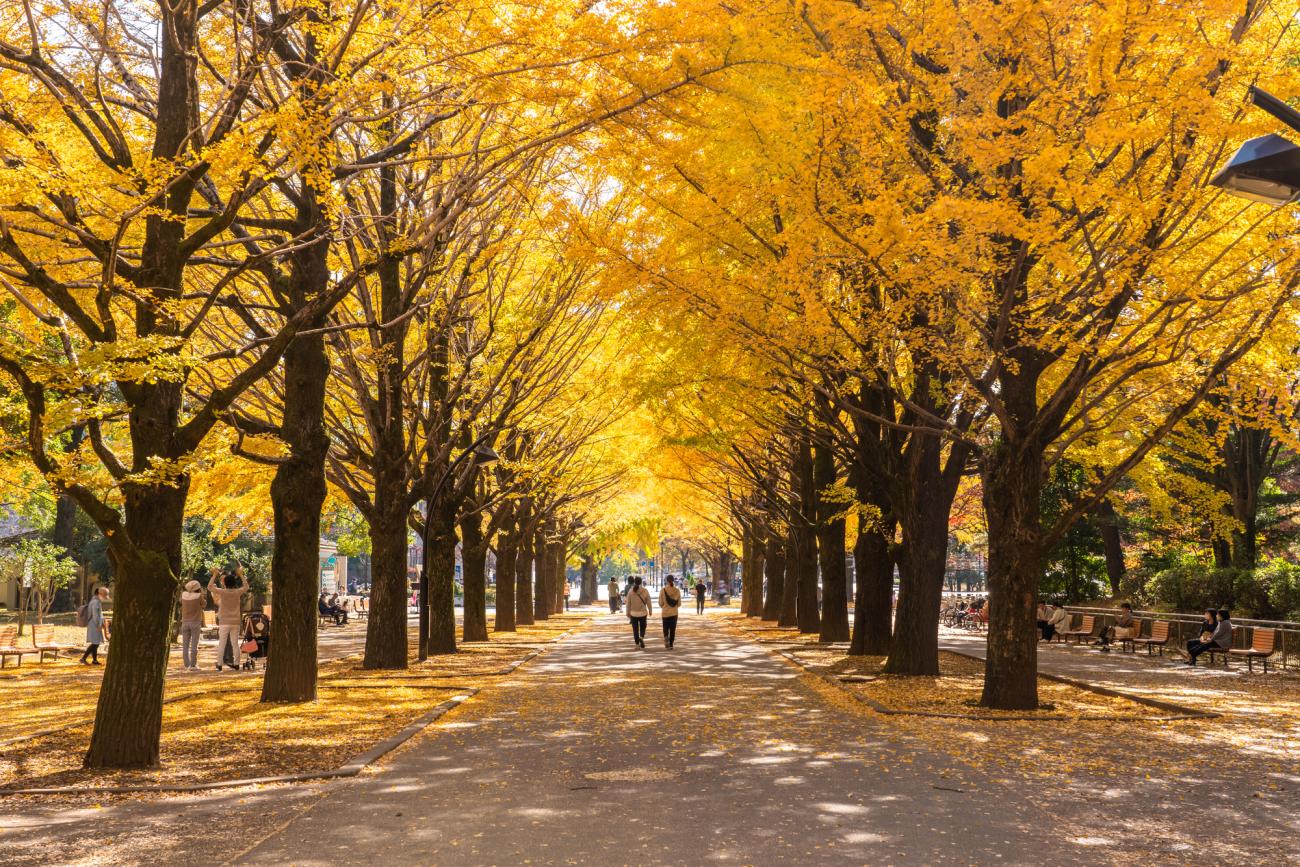
Tokyo’s autumn foliage season transforms the city into a photographer’s paradise, and the best part is that most prime viewing spots won’t cost you a single yen!
The trick to capturing those Instagram-worthy shots is timing your visit for late November through early December when the maples reach their peak crimson glory.
Temple gardens like Sensō-ji and sprawling parks such as Yoyogi Park offer stunning leaf-peeping opportunities where you can wander beneath canopies of gold and red without worrying about admission fees.
Best Photography Locations and Timing
Japan’s autumn foliage season transforms Tokyo into a photographer’s paradise, and the best part?
Every spectacular shot won’t cost you a yen!
Here’s how to maximize your autumn photography adventure:
- Golden Hour Magic – Arrive 30 minutes before sunset timing for perfect lighting
- Rikugien Garden – Opens 9 AM; weekday mornings beat crowds
- Meiji Jingu Gaien – Ideal for lightning photography practice
- Shinjuku Gyoen – Multiple backdrops, endless compositions
Temple Grounds and Park Areas for Leaf Peeping
When autumn arrives, ancient temple grounds become some of the most stunning (and completely free!) spots to catch those brilliant red and gold leaves without fighting the tourist crowds.
Temples like Rikugien Gardens offer peaceful park walking trails where seasonal leaf colors absolutely pop against traditional architecture.
Trust me, you’ll want your camera ready!
Early morning visits mean zero crowds and perfect lighting for Instagram-worthy shots.
Transportation Tips for Budget-Conscious Explorers
Getting around Tokyo doesn’t have to drain your wallet, especially when you know the smart routes and resources that locals use!
One of the best-kept secrets is that many of Tokyo’s incredible free attractions are actually within walking distance of each other—think of the Imperial Palace East Gardens connecting to Ginza’s architecture, then over to Tokyo Station’s galleries.
Plus, scattered throughout the city are free Wi-Fi hotspots and tourist information centers that not only help you navigate but also hook you up with maps, discount coupons, and insider tips that can save you serious cash.
Walking Routes That Connect Multiple Free Attractions
The real magic happens when travelers string together Tokyo’s free attractions into walking routes that flow naturally from one spot to the next!
Creating a custom itinerary means mapping out temples, parks, and neighborhoods that sit within comfortable walking distance of each other—and trust me, knowing where to find clean restrooms, water fountains, and shaded benches along the way turns a good walking tour into a great one.
With a little planning, anyone can design their own perfect day of free exploration without wearing out their feet or their patience.
Creating Your Own Free Tokyo Tour Itinerary
Smart travelers know that Tokyo’s geography actually works in their favor—many of the city’s best free attractions cluster together in walkable neighborhoods, which means hopping on the train isn’t always necessary.
Build your perfect day around these natural combinations:
- Asakusa temples + Sumida River stroll + local produce markets
- Yoyogi Park (urban wildlife spotting!) + Meiji Shrine + Harajuku people-watching
- Imperial Palace gardens + Ginza window shopping
- Ueno Park museums + Ameyoko street market
Mix and match based on your energy!
Rest Stops and Public Facilities Along the Way
Walking between free attractions sounds amazing until nature calls or your feet start screaming for mercy!
Tokyo’s got your back with convenience stores every few blocks offering clean public restrooms (no purchase required).
Download rest stop maps before heading out, or search “トイレ” (toilet) on Google Maps for public restroom locations.
Major stations always have facilities, plus free water fountains!
Free Wi-Fi Locations and Tourist Information Centers
Staying connected while exploring Tokyo doesn’t have to drain your wallet through expensive roaming charges—the city offers tons of free Wi-Fi hotspots at convenience stores, train stations, and tourist information centers that’ll keep you plugged in without spending a yen!
Tourist information centers are absolute goldmines for budget travelers because they stock free maps, brochures, and helpful English-speaking staff who can point you toward hidden gems you might’ve missed.
Trust me, downloading offline maps while connected to free Wi-Fi and grabbing those colorful area guides will transform you from a confused wanderer into a confident explorer who knows exactly where the next free attraction waits!
Staying Connected Without Roaming Charges
While roaming charges can drain a travel budget faster than a vending machine addiction, Tokyo makes it surprisingly easy to stay connected for absolutely nothing.
Here’s how to maintain offline connectivity without the digital detox:
- Rent free pocket Wi-Fi from Tokyo Metro stations
- Download essential apps and maps before arriving
- Grab a prepaid SIM card at airports
- Access unlimited Wi-Fi at convenience stores
Maps and Brochures for Self-Guided Adventures
Tokyo’s tourist information centers are treasure troves of free resources that most visitors walk right past without realizing what they’re missing.
These hubs offer interactive maps with subway routes, Tokyo free walking tours, and Tokyo neighborhood guides—all at zero cost!
The brochure design alone makes planning adventures feel less like homework and more like flipping through a travel magazine.
Trust me, grabbing these materials beats draining your phone battery!
Wrapping Up
Tokyo proves you don’t need deep pockets to have an amazing adventure!
Here’s a fun fact: visitors who explore Tokyo’s free attractions typically save over $200 per day compared to those who stick to paid experiences.
That’s serious cash for amazing meals!
From ancient temples to bustling markets, you’ve got endless options that won’t cost a single yen.
So grab comfortable shoes, charge your camera, and start exploring this incredible city without breaking the bank!

